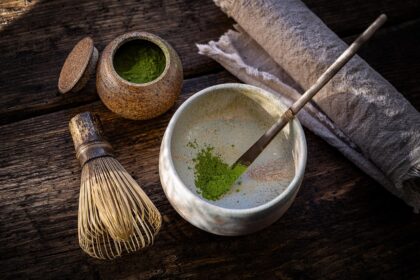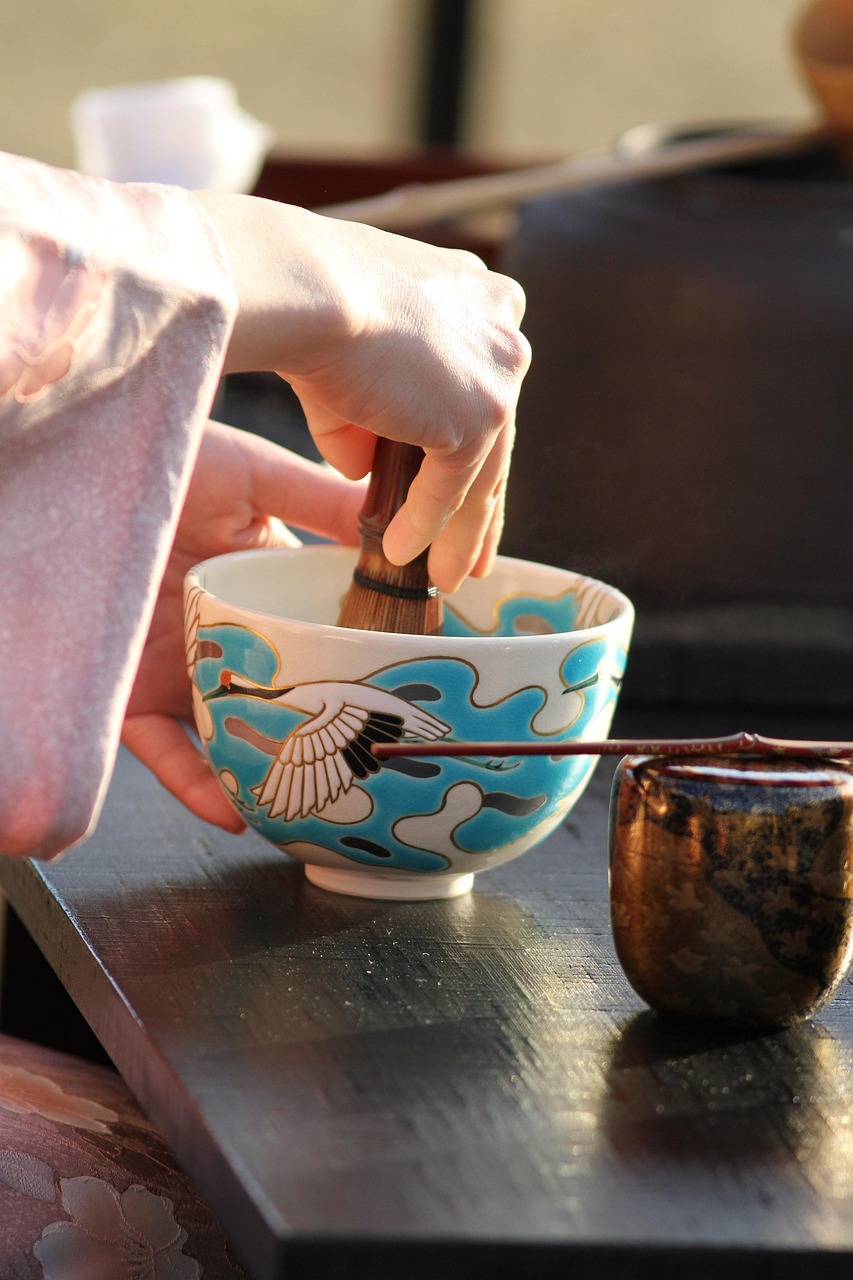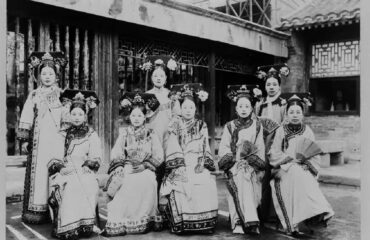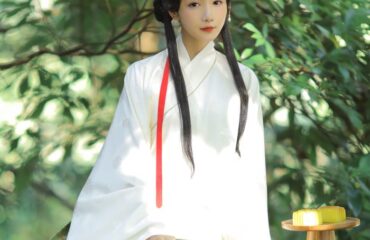
The Japanese tea ceremony, known as Chanoyu (茶の湯) or Chado (茶道, “The Way of Tea”), is far more than the simple act of preparing and drinking matcha. It is a profound cultural and spiritual practice, a choreographed art form where every movement, every object, and every word holds deep significance. Rooted in Zen Buddhism, the ceremony is guided by four key principles: harmony (和, wa), respect (敬, kei), purity (清, sei), and tranquility (寂, jaku). For a guest (kyaku), participating in a tea ceremony is an invitation into a world of quiet contemplation and aesthetic beauty. Understanding and observing the proper etiquette is not merely about following rules; it is an active form of participation, a way to show respect for the host (teishu), the other guests, the carefully chosen utensils, and the tradition itself. This guide provides a detailed overview of the etiquette required of a guest, ensuring a respectful and enriching experience for all.
1. Preparations Before the Ceremony
The guest’s role begins long before stepping into the tea room. Proper preparation demonstrates sincerity and respect for the occasion.
Attire and Personal Grooming: Clothing should be conservative, modest, and clean. The goal is to blend into the serene atmosphere, not to stand out.
- Style: For formal ceremonies, a kimono is traditional but not mandatory. For men, a dark, conservative suit is appropriate. For women, a modest dress, skirt, or suit in muted colours is suitable. Avoid revealing clothing, loud patterns, or overly bright colours.
- Jewellery: Remove all jewellery, particularly rings, watches, and bracelets. These can make noise or, more importantly, risk scratching the precious, often antique, tea bowls and utensils.
- Fragrance: Do not wear any perfume, cologne, or heavily scented lotions. The ceremony engages all senses, and the subtle aroma of incense and tea should not be overpowered.
- Socks: It is essential to bring a fresh pair of white socks to change into before entering the tea room. If wearing a kimono, these would be tabi. If in Western attire, clean white dress socks are sufficient. This is a crucial mark of purity and respect for the clean tatami mats.
Essential Items: While a host may provide them, a well-prepared guest traditionally brings a few personal items tucked into their kimono sleeve or a small bag.
- Kaishi (懐紙): A small packet of washi paper napkins. These are used for placing sweets on and for wiping the rim of the tea bowl when sharing koicha (thick tea).
- Sensu (扇子): A small folding fan. This is not used for fanning oneself but as a symbolic marker of respect. It is placed on the tatami mat in front of your knees when bowing or formally viewing items.
2. Arrival and Entering the Tea Room (Chashitsu)
The transition from the outside world to the tranquil space of the tea room is a critical part of the ceremony.
Arrival: Punctuality is paramount. Arrive approximately 15 minutes before the scheduled time. This allows you to gather in the waiting room (machiai), calm your mind, and change your socks without rushing. In the machiai, you can admire the scroll or flower arrangement prepared by the host, which often sets the theme for the day’s gathering.
The Roji Garden and Purification: After being summoned by the host, guests proceed through the roji (露地), or “dewy path.” This garden path is meant to be a first step in detaching from the mundane world. Before entering the tea room, guests will stop at the tsukubai (蹲), a low stone water basin, for ritual purification. The process is as follows:
- Pick up the long-handled wooden ladle (hishaku) with your right hand and scoop a basinful of fresh water.
- Pour some water over your left hand to rinse it.
- Transfer the ladle to your clean left hand and pour water over your right hand.
- Transfer the ladle back to your right hand. Cup your left hand and pour a little water into it.
- Quietly rinse your mouth with this water, spitting it out discreetly onto the ground below the basin. Never drink directly from the ladle or spit water back into the basin.
- Finally, tilt the ladle vertically, allowing the remaining water to run down the handle, thus purifying the ladle itself before placing it back where you found it.
Entering the Tea Room: The entrance to a traditional tea room is often a nijiriguchi (躙口), a very small, low entryway. This design forces every guest, regardless of social standing, to bow low and crawl inside, symbolizing humility. The main guest (shokyaku) enters first. You should place your sensu on the mat before you, place your hands on the mat, and slide in on your knees, being careful not to step on the threshold.

3. Conduct Inside the Tea Room
Once inside, your movements should be deliberate, quiet, and mindful. Seating is done in seiza (正座), a formal kneeling posture. While it can be challenging for those unaccustomed to it, try to maintain it for as long as possible. Hosts are often understanding if you need to discreetly shift your weight.
The sequence of actions upon entering is highly structured.
| Step | Action | Purpose |
|---|---|---|
| 1. Enter and Proceed | After entering through the nijiriguchi, proceed to the tokonoma (床の間), the alcove of honor. | To begin the process of appreciation and respect. |
| 2. Admire the Tokonoma | Kneel formally before the alcove. First, observe the scroll (kakemono), bowing in respect. Then, appreciate the flower arrangement (chabana). | To understand the host’s theme for the ceremony and appreciate their aesthetic choices. |
| 3. View the Hearth | Move from the tokonoma to view the hearth (ro) or brazier (furo) and the kettle (kama). | To show respect for the primary tools used to prepare the tea. |
| 4. Take Your Seat | Proceed to your designated seat, which is determined by your guest status (shokyaku sits closest to the host). | To acknowledge your place in the gathering. Avoid stepping on the joins of the tatami mats. |
| 5. Formal Greetings | Once all guests are seated, the host enters. The main guest leads a formal exchange of bows and greetings. | To officially commence the ceremony and establish a respectful rapport. |
4. The Serving and Receiving of Sweets (Wagashi)
Sweets, or wagashi (和菓子), are served before the tea. Their flavour is designed to complement the tea, and they should be consumed entirely before the tea is served. The sweets will be presented on a platter. The main guest will bow to the host, then to the next guest, saying “Osaki ni” (お先に, “Pardon me for taking it first”). They will then use the provided chopsticks or pick (kuromoji) to transfer a sweet onto their kaishi paper. The platter is passed down the line of guests, with each guest repeating the bowing gesture to the person after them before taking their sweet.
5. The Art of Receiving and Drinking Tea
This is the heart of the ceremony. The etiquette varies slightly depending on whether you are being served koicha (thick tea), which is formal and shared from a single bowl, or usucha (thin tea), which is more informal and served in individual bowls.
Receiving the Bowl: When the host places the tea bowl in front of you, bow. The guest next in line will say “Osaki ni” to you, and you should return a slight bow without speaking.
The Ritual of Drinking:
- Pick Up: Place the bowl on the palm of your left hand and steady it with your right hand along the side.
- Raise and Bow: Raise the bowl slightly in a gesture of gratitude to the host.
- Turn the Bowl: The most beautiful or decorated side of the bowl (the “front”) will be facing you. Out of respect, you should not drink from this side. Rotate the bowl clockwise in two distinct movements (about 90 degrees each time) so the front is turned away from you.
- Drink: Take several sips. For usucha, you should finish the entire bowl. It is customary to make a final, audible slurp to indicate that you have finished and thoroughly enjoyed the tea. This is considered polite. For koicha, which is shared, you will take exactly three and a half sips before wiping the rim.
- Wipe the Rim (Koicha only): After drinking your portion of koicha, wipe the spot on the rim where your lips touched with your fingers or your kaishi paper. This is a gesture of purity for the next guest.
- Turn Back and Admire: After finishing, turn the bowl counter-clockwise back to its original position so the front faces you once again.
- Place and Appreciate: Place the bowl back on the tatami mat and take a moment to admire its craftsmanship—the glaze, shape, and feel.
A comparison of the etiquette highlights the differences:
| Feature | Koicha (Thick Tea) | Usucha (Thin Tea) |
|---|---|---|
| Sharing | One bowl is shared among all guests in sequence. | Each guest receives their own individual bowl. |
| Sips | Each guest takes three and a half sips. | The guest finishes the entire bowl in several sips. |
| Final Sip | No slurp. The process is silent and meditative. | A final, appreciative slurp is expected and polite. |
| Wiping the Rim | Yes, the rim must be wiped clean before passing the bowl. | No, as the bowl is not passed to another guest. |
| Formality | Considered the more formal and central part of a full tea gathering. | More informal and often served after koicha or on its own. |
6. Conversation and Appreciation of Utensils
Conversation during a tea ceremony is quiet and limited. It should focus entirely on the elements of the ceremony itself. The main guest (shokyaku) takes the lead, asking the host questions on behalf of all guests. Appropriate topics include:
- The poetic name of the tea and the sweets.
- The origin and maker of the tea bowl, tea scoop (chashaku), and tea caddy (natsume).
- The meaning of the calligraphy on the scroll.
After the tea has been served, the host may invite guests to more closely inspect some of the key utensils. When doing so, handle these precious items with extreme care. They should be picked up using a protective cloth (fukusa), and you should avoid touching them directly with your fingers.
7. Concluding the Ceremony and Departure
As the ceremony draws to a close, the host will initiate the final farewells. A final, deep bow is exchanged between the host and all guests, expressing mutual gratitude. Guests leave in the reverse order they entered, with the guest seated furthest from the host exiting first. As you leave, pause at the entrance for one final look at the tokonoma and bow in appreciation before sliding out through the nijiriguchi. The host will watch until all guests have departed from the tea room. Following the ceremony, it is a thoughtful and highly appreciated gesture to send a handwritten thank-you note to the host within a few days.
While the etiquette of the Japanese tea ceremony may seem intricate and daunting, its essence lies in mindfulness and sincerity. The host has invested immense effort in creating a unique and harmonious experience, and the guest’s adherence to etiquette is the most profound way to show appreciation. It is a dialogue without words, a shared moment of peace and beauty. By embracing the role of the guest with an open heart and a respectful mind, you contribute to the harmony of the occasion and will find the experience to be deeply rewarding and memorable.


